Armenian Dram is the national currency of the Republic of Armenia. 1 dram is equal to 100 luma. The exclusive right to issue the national currency belongs to the Central Bank of the Republic of Armenia.
Before introducing you the Armenian Dram and how it looks like, we should definitely go back to the history…
FIRST ARMENIAN COINS
Coins in Armenia have been around since the 1st millennium BC. Even during the reign of Yervandouni, during 6-3 centuries BC, the Armenian satraps have produced coins with their faces on it.
Due to the international trade, the silver coins of Alexander the Great (356-323 BC) also came to the Armenian markets from Asia Minor and Mesopotamia.
As a rule, on the face of Hellenistic Armenian drams, there is the monarch’s face. On the back, there are mythological symbols. In addition, there was also the king’s name and title in Greek script.
During the Artashesyan period (from 189 BC to 1 AC) coin making gained more popularity in Armenia. During the reign of Tigran the Great, Armenian coins also entered the international market as well.
A king from the Kingdom of Bagratuni (885-1045), more specifically, the King of the Lori region, Kyurike the Second, made the first coins which had Armenian inscriptions on them.
In the XI century, in the regions of Tsopk and Armenia Minor, the Cilician Armenian state (1080-1375) became a kingdom from 1199.
The kingdom’s coins are diverse and have come to us in relatively large amounts. Silver, bronze, copper and also limited amounts of gold coins are known from the Cilician kingdom times.
Gold coins were named Monet (or dahekan in Armenian). The silver ones were called Dram and the copper coins – Dang, map or simply money.
From the beginning of the XIII century, the copper and also a few silver coins of the Georgian kings enter into the northern and eastern regions of Armenia.
From the 15th century, Persian rulers had the eastern part of Armenia under their rule. The western part was under the rule of Turkish sultans.
Hence, in the XV-XVIII centuries, various Persian clans such as the Sefevians and the Afshar people carried out the money circulation in the eastern part of Armenia.
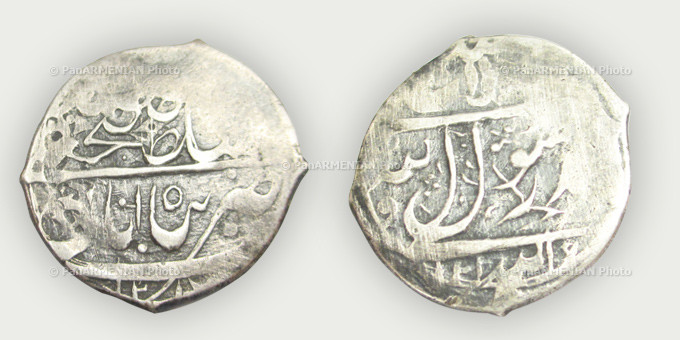
Persian Empire, Fat’h Ali Shah, (1797-1834) silver Abbasid minted in 1797 in Panahabad (Shushi). Weight 4.36g, diameter 22.36mm.
On the other hand, Turkish sultans carried out the money circulation in the western part of the country. Gold, silver, and also copper coins widely circulated in Armenia.
In the first half of the 19th century, the Russian Empire included the eastern part of Armenia in its territory. Consequently, until the end of 1917, the coins of the Russian Empire served for the money circulation in Armenia.
In addition, in the 19th century, the banknotes of the Russian Empire began to circulate in Armenia for the first time ever.
- 1910 banknote of 100 rubles
- Russian Empire copper coins
source: PanARMENIAN
During that period, the money of the Russian Empire was very diverse, including copper, silver and also gold coins. There were also bank notes in the form of state credit cards.
After the October Revolution in 1917, Armenia, Georgia, and Azerbaijan left the Russian empire, created an independent union called Transcaucasian Commissariat.
In November 1917, the leadership of the Transcaucasian Commissariat (Khachatur Karchikyan was the Commissar) decided to issue a series of new banknotes.
Constantly being under the rule of foreign states and losing independence, Armenia, until 1918 did not have its own monetary unit.
In May 1918, the Transcaucasian Commissariat, however, came to an end. Then, independent states were formed in Transcaucasia. On May 28, 1918, Armenia becomes an independent republic.
The newly created Ministry of Finance planned to issue a new set of bank notes.
Considering that the new banknotes would take a lot of financial resources and time, in August 1919 the checks of the Yerevan branch of the State Bank were issued. Those checks were temporary. Hence, soon the banknotes would come to replace them in about three months.
The 5, 10, 25, 50, 100, 250, 500, 1000, 5000 and also 10000 rubles were issued with two main sizes.
- Bank notes of first Republic of Armenia
source: PanARMENIAN
In the last period of the Republic of Armenia (June 1920), banknotes with the nominal value of 50, 100 and 250 rubles started to circulate.
The main inscriptions were in Armenian, but there were also inscriptions in Russian and French. Hakob Kojoyan and Arshak Fetvajyan were the designers. In addition, “Waterlow and Sons” (London) carried out the printing.
Following the establishment of Soviet rule in Armenia, in 1921, the banknotes of the Socialist Republic of Armenia started their circulation.
The 1922 series presented the banknotes of the nominal value of 25000, 100000, 500000, 1000000 and also 5000000 rubles and the face value of 50000 RUB.
The inscriptions were both in Russian and Armenian, on thin papers.
In 1923, debenture with one chervonets nominal value was made, which, however, did not circulate. The design included beautiful national sights and images. All inscriptions were in Armenian and there were also four official signatures.
In 1923, the Soviet Republics of Armenia, Georgia, and Azerbaijan united and formed the Transcaucasian Federation which issued its coins.
In 1923 the following nominal values were issued: 1000, 5000, 10000, 25000, 50000, 100000, 250000, 500000, 1000000, 5000000 and 10000000 rubles. The inscriptions were in Armenian, Russian, Georgian, and also Azeri.
In 1924, the Transcaucasian Soviet Federative Socialist Republic (TSFSR), issued the following banknotes with nominal values of 25, 50, 75, 100, 250 million and 1 and 10 billion rubles.
Armenian Dram on its way
After the formation of the Soviet Union, in 1924 the USSR banknotes and coins went into circulation in Soviet Armenia. Their circulation in the territory of Armenia continued until November 22, 1993, when the national currency was put into circulation.
Till 1993, various banknotes were released. Here are some of them:
- 2 USSR chervontsy of 1928
- one ruble bank note of 1938
- 1 ruble bank note of 1947
- 100 ruble bank note of 1961
- 100 ruble bank note of 1991
- 1000 ruble bank note of 1992
Armenian drams, or banknotes with nominal values of 10, 25, 50, 100 and 200 drams, were introduced on November 22, 1993.
Among the name offers for the national currency were: dram, stak, ibar, dahekan. For smaller units: manradram, ar, manr, imi, zuza, plik, luma.
The President of Armenia at that period, Levon Ter-Petrossian along with Vice-President Gagik Harutyunyan, Prime Minister Hrant Bagratyan, Supreme Council deputies, officials and various experts attended the committee sitting in order to choose the final name.
Levon Ter-Petrossian offered Dram and Luma for the main currency and the small units. After voting, the suggestion was accepted.
Later in 1994 and 1995, the banknotes with the nominal value of 500, 1000 and 5000 started to circulate. In addition, in 1996, in commemoration of the 32nd Chess Olympiad in Yerevan, a commemorative coin with the nominal value of 100 drams has been issued.
In 1997, the Central Bank of Armenia issued the “Charents-100” coin with the nominal value of 100 AMD (Armenian Dram) made out of copper-nickel alloy. This coin was dedicated to the 100th anniversary of the famous Armenian poet Yeghishe Charents.
Armenian dram is listed as ‘AMD’ under ISO 4217 international standard.
The Central Bank of Armenia also issued an “Anahit” gold coin worth 25,000 drams. It was devoted to the goddess Anahit of the Armenian mythology. The coin was put into circulation with 500 copies and was sold as a commemorative coin.
In 1998-99, the Central Bank of Armenia issued banknotes with the nominal values of 50, 100, 500, 1000, 5000 and 20000 AMD. You can see the most prominent Armenian figures on them. The Central Bank also issued commemorative coins.
- 100-dram banknote featuring Viktor Hambardzumyan, famous armenian scientist, astronomer
- 500-dram bank note featuring architect Alexander Tamanyan and government building
- 1000-dram bank note featuring Armenian writer Yeghishe Charents and a carriage with an old building in Yerevan at the background
- 20000-dram bank note featuring artist Martiros Saryan and a fragment of ‘Armenia’ scenery
- 100000-dram bank note featuring King Abgar V
On June 6, 2001, in the history of the Armenian dram circulation, the first jubilee banknote was issued with the nominal value of 50,000 drams dedicated to the 1700th anniversary of Christianity adoption in Armenia.
On July 1, 2002, the banknote with the nominal value of 1000 dram was put into circulation, which was similar to the sample of 1999 in its design and differs only with new protective features.
From January 1, 2003, coins with the nominal value of 20 AMD have been put into circulation. Coins with nominal values of 50, 100, 200 and 500 drams have been put into circulation since March 31.
Since July 10, 2003, banknotes with the nominal value of 5000 AMD, with a new banknote protection feature were put into circulation. This was mainly due to the need to raise the level of protection against counterfeit money.
As of December 1, 2004, coins with the nominal value of 10 AMD were put into circulation.
In 2007, banknotes with the nominal value of 20000 AMD, which differ from the previous one by its size and also some protection features, have been put into circulation.
In 2009, banknotes with the nominal value of 100000 AMD have been put into circulation since August 24.
Modern banknotes differ from the previous ones in an enhanced level of protection.
Now let’s see what Armenian Dram looks like.
Armenian Dram: Banknotes
Banknotes in circulation: 1000-dram, 5000-dram, 10 000-dram, 20 000-dram, 50 000-dram, 100 000-dram.
1000 AMD (from 1999, March 1) is almost equal to 2 USD. The front page of the banknote represents the portrait of famous writer Yeghishe Charents. There is also a part of his poem: “I love my sweet Armenia’s word which is filled with the taste of the sun”
On the other side of the banknote, there is a picture of old Yerevan.
5000 AMD(from 2000, July 1) is almost equal to 10 USD. On the front page, there is the portrait of another prominent Armenian writer Hovhannes Tumanyan. There is also a part of the architectural monument on the front side.
On the other side, you can see the landscape of Lori from Martiros Saryan’s painting.
10,000 AMD(from 2003, November 1) is almost equal to 20 USD. On the front, there is the portrait of writer Avetik Isahakyan on the background of Mount Aragats.
On the other side, there is a scene from the second largest Armenian city-Gyumri.
20,000 AMD(from 1999, March 1) is almost equal to 50 USD. The first page includes the portrait of famous Armenian painter Martiros Saryan, on the background of one of his paintings.
On the opposite side, there is an episode from “Armenia” landscape of Saryan.
50,000 AMD(from 2001, June 4) is almost equal to 100 USD. On the first page, you can see the Ejmiatsin Cathedral and symbols of Christianity.
The other side represents the Mt. Ararat and also the scene of St. Gregory the Illuminator and king Tiridates rising up the Armenian Church. On the right, you can see a khachkar from Kecharis Monastery.
100,000 AMD(from 2009, August 24) is almost equal to 200 USD. On the front side, there is the picture of historical Armenian ruler Abgar V of the Edessa. There is also a part of the first-century regional map and a gold coin.
On the other side, there is a scene from the bible, where St. Thaddeus transfers the painting of Jesus Christ (painted alive) to Abgar V.
Armenian Dram: Coins
The following are all the Armenian coins currently in circulation (click to see):
| COIN | RELEASE DATE | MATERIAL |
WEIGH in grams / DIAMETER in milimetres |
OTHER INFORMATION |
| 10 dram | 2004, December 1 | aluminum | 1.30/20.0 | It is almost equal to 0.020 USD. As you can see above, there are two types of the coins. Both of them are in use. In addition, on the back side, there is the Armenian Coat of Arms. |
| 20 dram | 2003, January 1 | copper-covered steel | 2.75/20.5 | It is almost equal to 0.04 USD. It has the Armenian Coat of Arms on the back side. |
| 50 dram | 2003, January 1 | brass-coated steel | 3.50/21.5 | It is almost equal to 10 cents. Usually the coin has the Coat of Arms on the bakc side, but the new editions also represent cultural monuments like Khor Virap, a prominent Armenian monastery, or Sanahin monastery, and also famous statues of Yerevan. |
| 100 dram | 2003, January 1 | nickel-plated steel | 4.00/22.5 | It is almost equal to 20 cents. The back side has the Armenian Coat of Arms. |
| 200 dram | 2003, January 1 | brass | 4.50/24.0 | This one equals to 40 cents. Just like most of the coins, it has the Coat of Arms on the back. |
| 500 dram | 2003, March 31 | Melchior (the center), brass (the circle) |
5.00/22.0 | It is almost equal to 1 USD. It has a very unique design and also different subtracts. The inner ring is a mixture of copper and nickel, the outer ring is an alloy of copper, aluminum and also nickel. In addition, the coat of Arm covers only the inner circle of the coin. |
Armenian Dram Symbol
The graphical symbol of Armenian dram is the capital letter D (Դ) from the Armenian alphabet with two horizontal lines crossing it. Karen Komendaryan first designed it in September 1995, before the creation of the graphical symbol of euro.
In 2001, he transmitted the documentary package to the president of that time, Robert Kocharyan. He also sent a copy of the package to Catholicos Garegin II and asked for his blessing.
After then, the Central Bank of Armenia held a competition for the graphical sign of the Armenian Dram. As a result, the bank selects Karen Komendaryan and also artist Ruben Arutchyan. They both provided similar designs.
- Karen Komendaryan
- R. Arutchyan
There is also a bronze statue dedicated to the Armenian Dram.
You can find it in Yerevan, right in front of the Central Bank.
The opening took place in 2008, November 22.
The statue depicts the two-sided letter “Դ” (D). The sculptor is Eduard Shakhikyan.


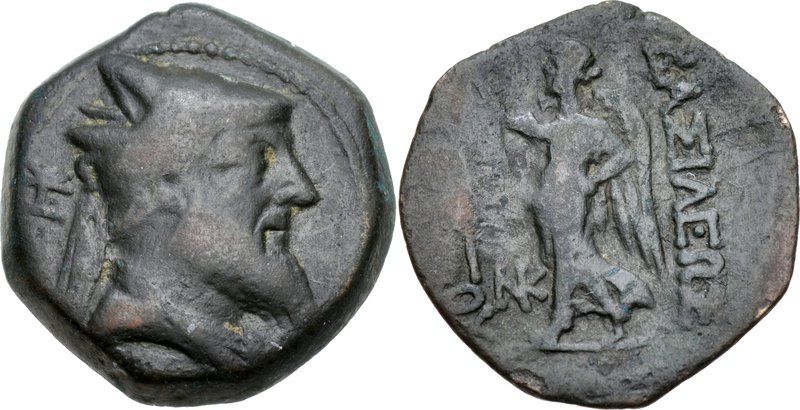
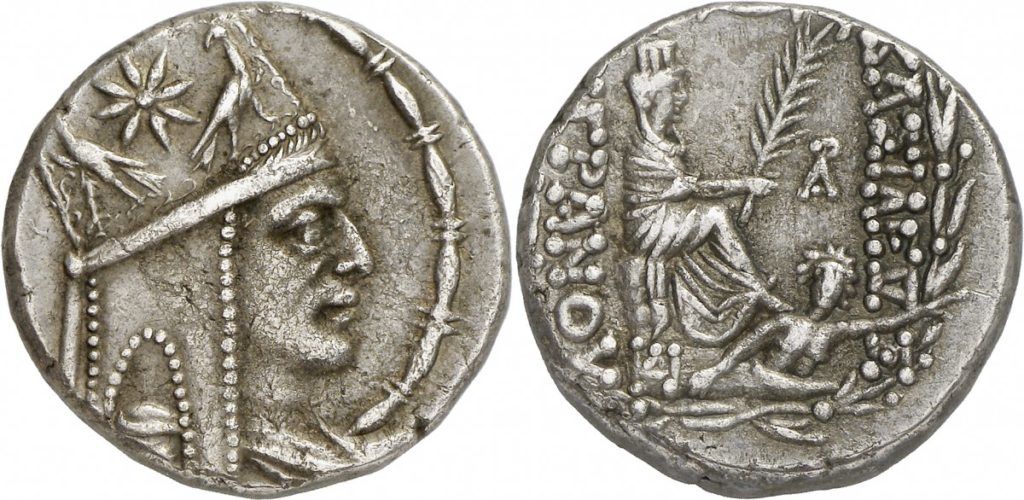


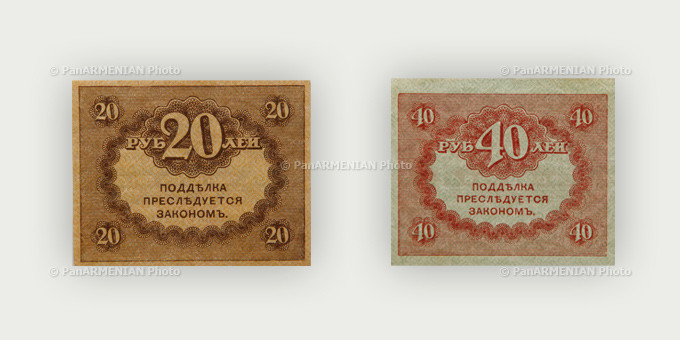
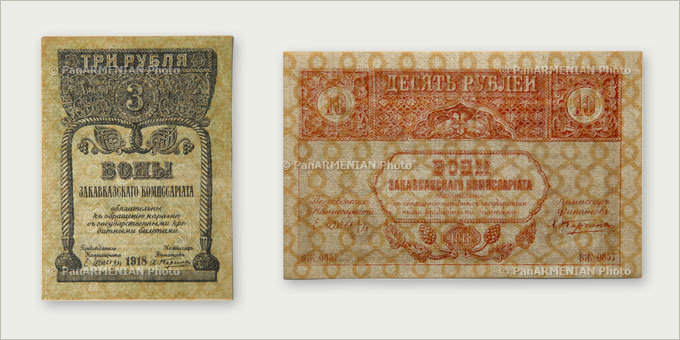
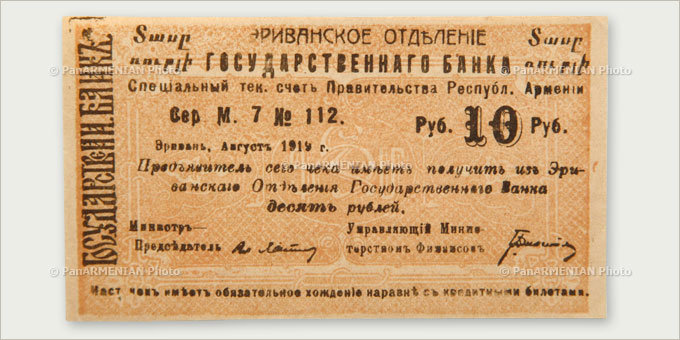



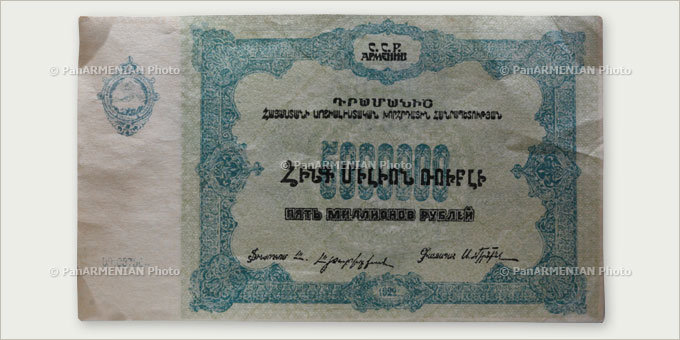








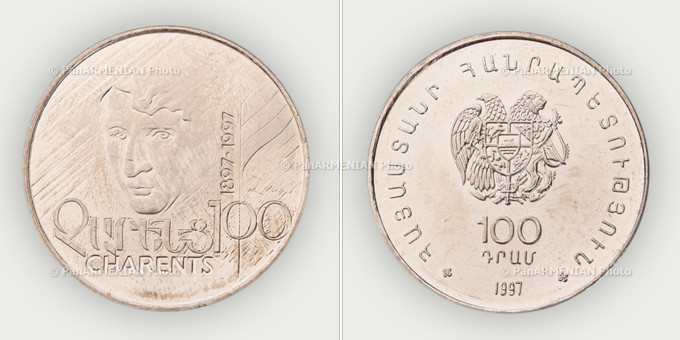
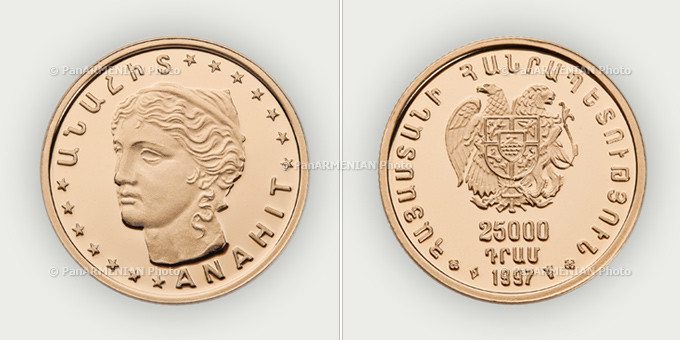





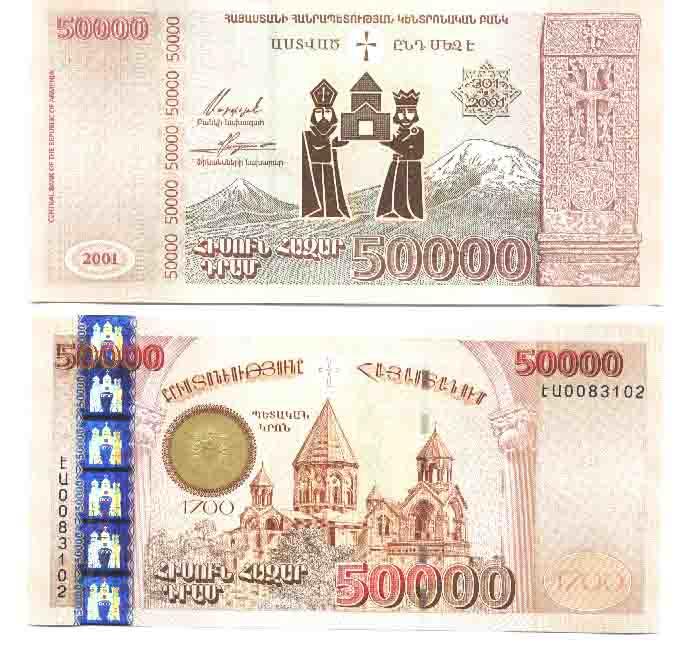

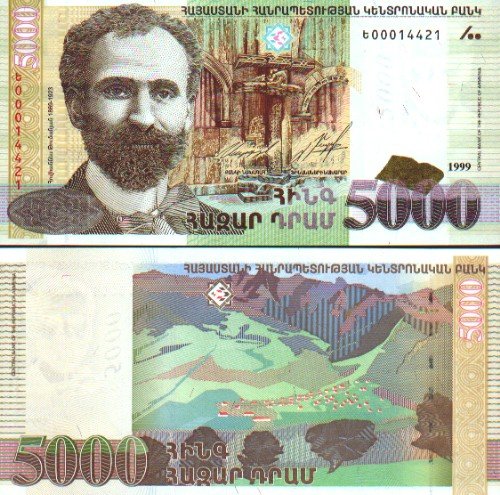
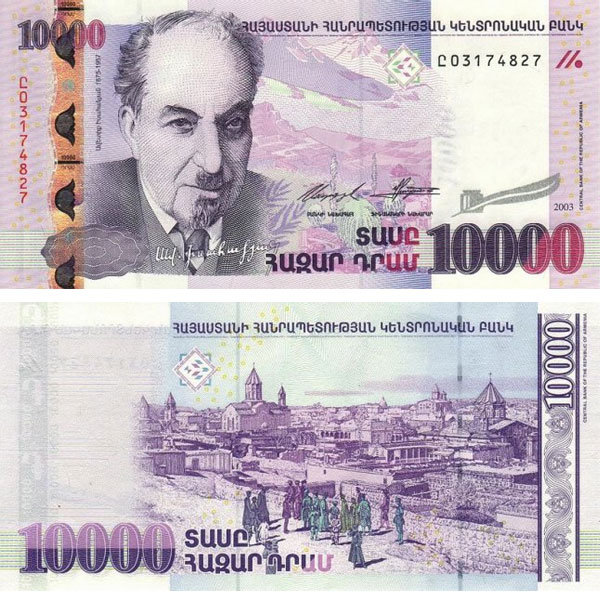
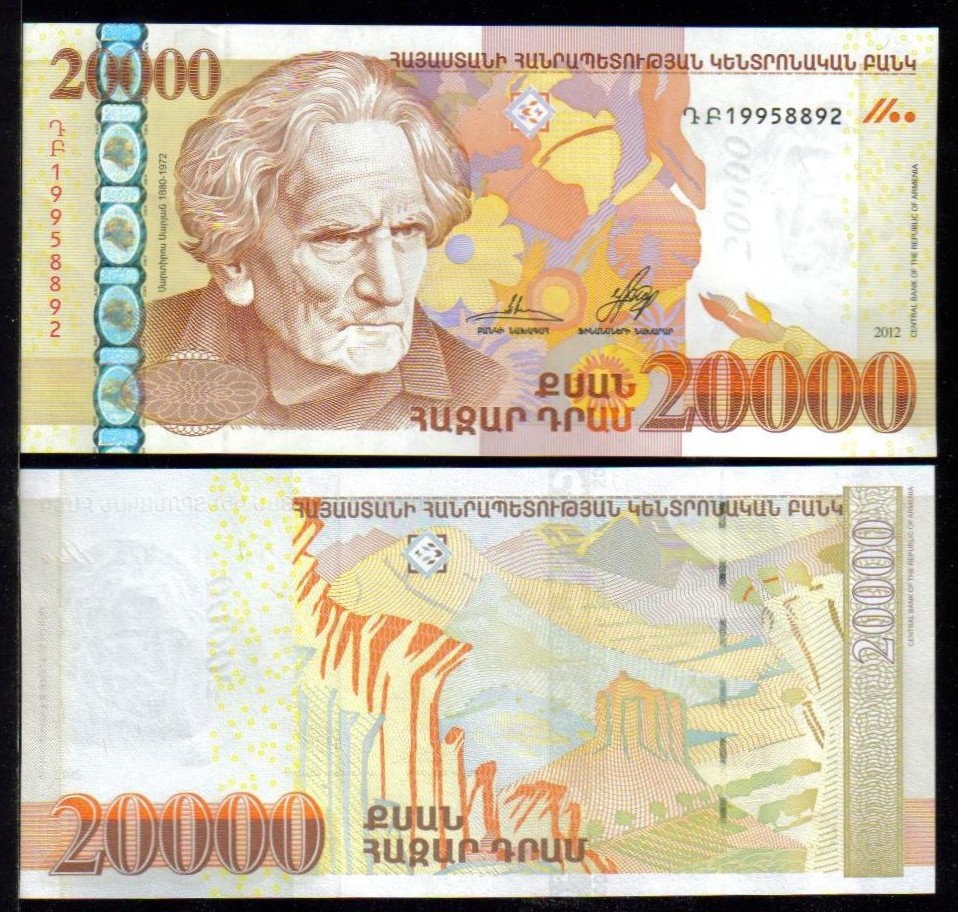
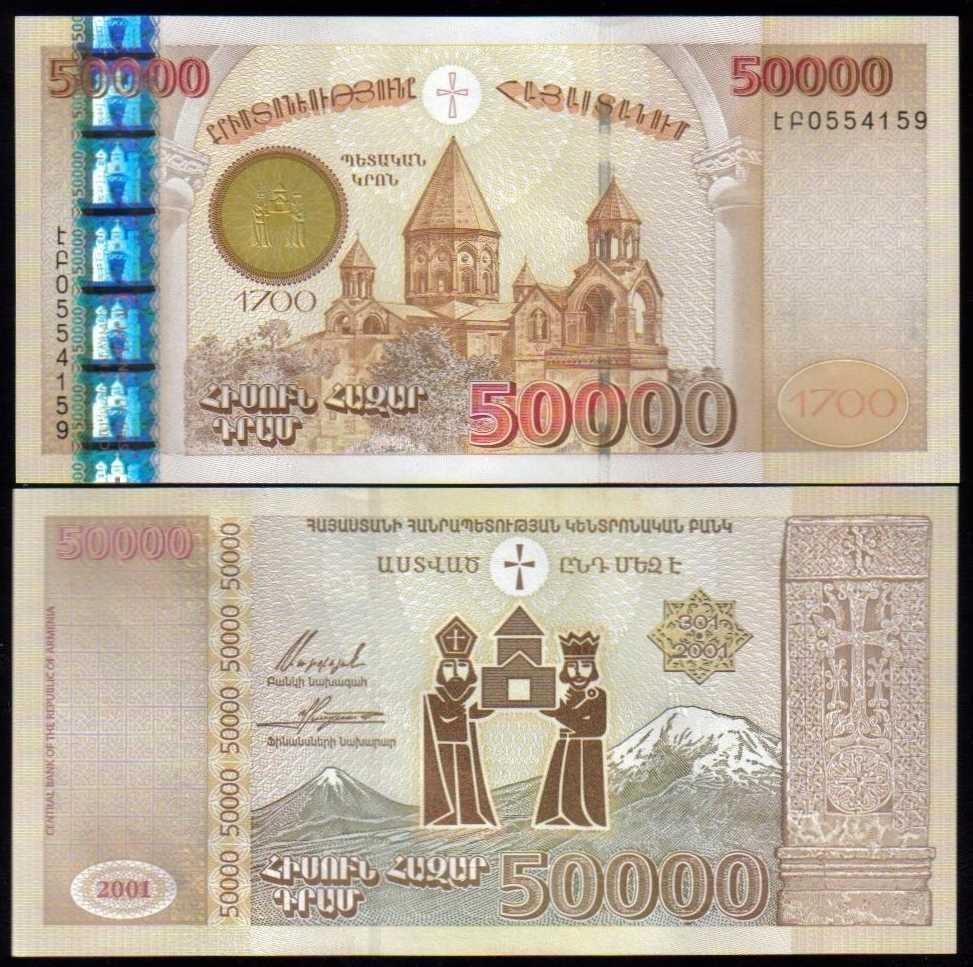
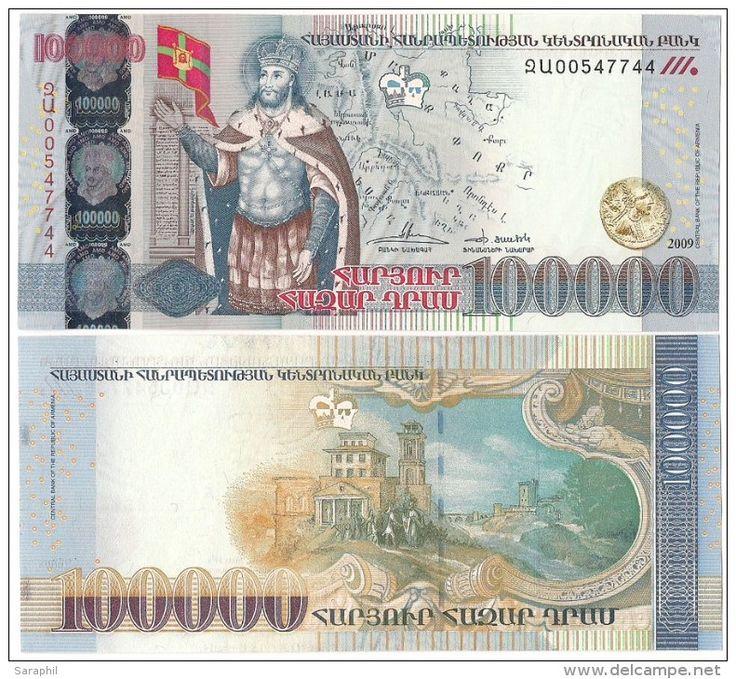









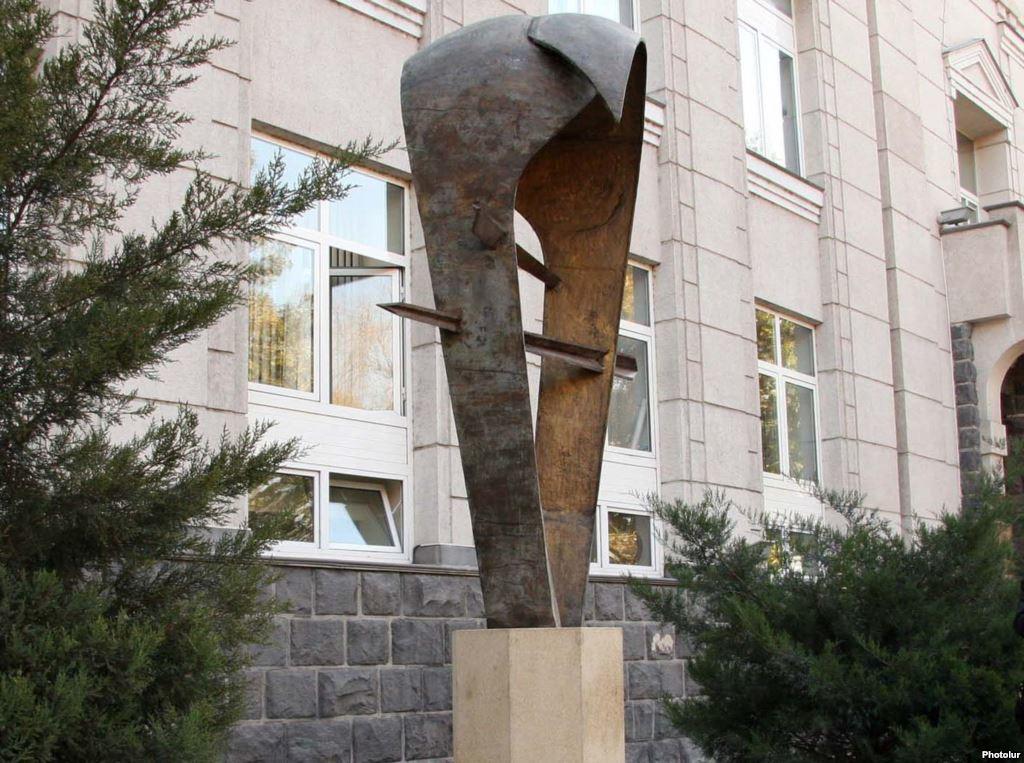





Leave a Comment